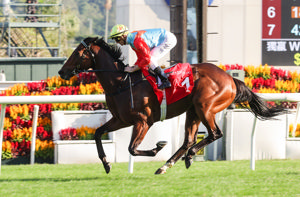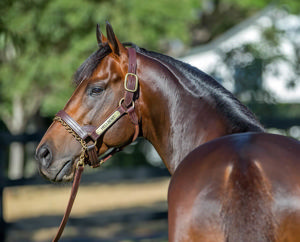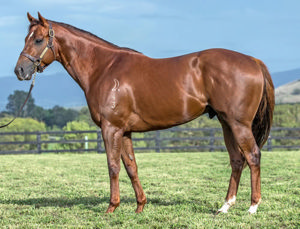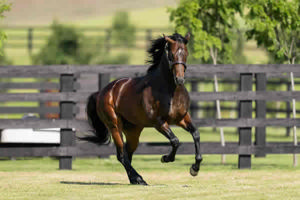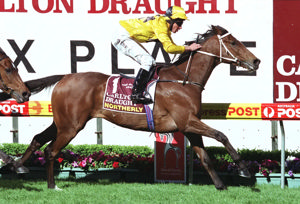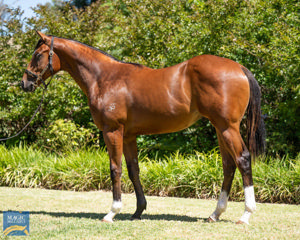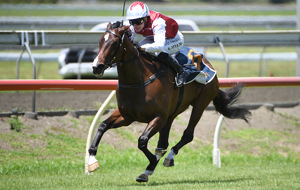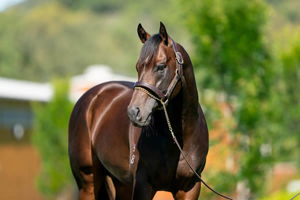I find it a constant source of frustration as to how often I underestimate how long it’s been since I wrote an article on a particular “hot topic” in our practice.
Tax and GST relating to the sale and maintenance rural farm properties has always been a “hot topic” at Carrazzo Consulting, but in the past few years the interest in this area from clients has, for want of a better word, exploded!
A recent search of my catalogue of articles shocked me when I discovered it had been over 10 years since I had specifically addressed the topic of “Capital Gains Tax & The Farm Main Residence”. This guilt and oversight is about to be removed with this article.
There are many horse industry players who run their business from a rural property where the family home is also situated. The capital gains tax (CGT) implications of selling all or part of these properties is often misunderstood, the main source for the confusion being the ‘pub talk’ out there indicating that any property that takes in the family home is always sold CGT free under the ‘main residence’ exemption. Sadly, this is not the reality.
- The fundamentals of the Main Residence Exemption (MRE)
From a tax perspective, one of the biggest advantages of a taxpayer owning their own home is the main residence exemption (‘MRE’) contained in Tax law. This is because where the MRE applies, any capital gain (or capital loss) on the disposal of a taxpayer’s home will generally be fully, or partially disregarded (i.e., ignored), for tax purposes.
As a result of Australia’s property boom, many taxpayers in more recent years have benefited from large capital gains when selling their home and the MRE has therefore, become an increasingly important concession. However, because there are many exceptions and intricate rules that need to be considered, the MRE is not so easily applied.
Generally, the MRE applies where an individual disposes of a dwelling (or an ownership interest in a dwelling), that was the taxpayer’s main residence throughout part, or all of the period (the ‘ownership period’) it was owned by the individual, basically as follows:
- A full exemption applies (i.e., a capital gain, or capital loss is fully disregarded) where the dwelling was the taxpayer’s main residence throughout their entire ownership period.
- A partial exemption applies (i.e., a capital gain, or capital loss is partly disregarded) where the dwelling was the taxpayer’s main residence for only part of their ownership period, and/or the dwelling was used for income-producing purposes.
TAX WARNING – Exemption generally only applies to natural persons
Importantly, only a natural person (i.e., an ‘individual’) may qualify for the MRE. An individual acting as trustee, companies and trusts are ineligible for the exemption, except in limited circumstances.
- What is a ‘dwelling’?
The definition of ‘dwelling’ is crucial to the application of the MRE. This is because the exemption applies if a CGT event happens in relation to a ‘dwelling’ (which includes the land directly underneath it) that was the taxpayer’s main residence.
The term ‘dwelling’ takes on its ordinary meaning but is extended at Tax Law to include a unit of accommodation that is a building (or contained in a building) and consists wholly or mainly of residential accommodation, and includes land directly underneath. Common examples of a dwelling include a house, cottage, apartment, flat, strata title unit, or a unit in a retirement village.
- . Living on the breeding property – tax issues
The main residence exemption for a taxpayer’s dwelling can also extend to ‘adjacent land’, up to a maximum of two hectares (i.e., 4.94 acres). The two hectares includes the land on which the taxpayer’s dwelling is situated. Importantly, adjacent land will only qualify for the exemption if it is sold together with the dwelling, and it was used mainly for private or domestic purposes in association with the dwelling over the period of ownership. Refer discussion at 1.3. below.
What the above indicates is that if you live on a large regional property, used for your horse business activity, and it is larger than 2 hectares, the land that exceeds 2 hectares is potentially subject to CGT when sold. For example, a 10-hectare property will have potentially 8 hectares subject to CGT.
Exempt 2 hectares can be chosen
Where the land exceeds two hectares, the taxpayer can choose which area will be included within the two hectares, i.e., the two hectares need not include the family home. Where the dwelling is situated on pre−CGT land, it appears the taxpayer may choose up to two hectares of post−CGT adjacent land to be covered by the main residence exemption.
Applying this CGT exemption and calculating the property capital gain is complex and the following example hopefully helps.
Example 1 – 2 hectares exempt from CGT
Fred owns a 10-hectare breeding property and he uses 4 hectares primarily for private or domestic purposes in association with his family home dwelling. Fred sells the farm for $1,000,000, which includes $200,000 for the farmhouse. The original acquisition price (i.e. CGT cost base) of the entire farm is $600,000, including $160,000 for the farmhouse. Therefore, the cost base attributable to the 10 hectares of land (which includes the land on which the farmhouse is located) is $440,000 ($600,000 less $160,000).
NB. At the time of buying the property, Fred should obtain a valuation that indicates how much of the $600,000 purchase price can be allocated to the farmhouse only. In the above example, $160,000 was allocated to the farmhouse.
Fred's total capital gain on the property sale is $400,000, being $1,000,000 less $600,000 (ignoring indexation). The cost base attributable to 2 hectares of the land is $88,000, being two-tenths of the total cost base of the land. The sale price attributable to 2 hectares of adjacent land are $160,000, being two-tenths of the sale price attributable to the land ($800,000). Therefore, the capital gain in respect of the 2 hectares is $72,000, being $160,000 less $88,000.
The capital gain on the farmhouse is $40,000, being $200,000 less $160,000.
Fred may disregard his capital gains of $72,000 (for the 2 hectares of land) and of $40,000 (for the farmhouse) under the main residence exemption provisions. Therefore, Fred includes in his assessable income a capital gain of $288,000, being the total gain of $400,000 less $72,000 less $40,000.
TAX TIP – 50% CGT discount may reduce a taxable capital gain
If a partial exemption applies, any remaining taxable capital gain may be reduced by 50%
using the CGT general discount if the dwelling was acquired at least 12 months before the date of disposal (generally, the contract date for the sale of the property).
Traditionally, it has been understood that the CGT small business concessions
could also potentially apply to the extent a capital gain could not be disregarded under the
MRE. However, a recent case has cast doubt on this understanding if only a small portion of the land is used for business purposes.
In Rus v FCT [2018] AATA 1854 (‘Rus’ case’), a property (containing the taxpayer’s main
residence) was found not to be an ‘active asset’, despite the existence of a shed and home
office used in the running of a business. The AAT ultimately came to this finding based on the small portion of the land used for business purposes, as compared with the sheer size of the property.
Also note if the property was acquired before 20 September 1985, no CGT would be applicable as it is an exempt asset.
- What is meant by ‘‘to the extent that it is used primarily for private or domestic purposes’’?
As noted above, the main residence exemption for adjacent land is available only ‘‘to the extent that’’ the adjacent land was used primarily for private or domestic purposes in association with the dwelling.
Adjacent land ‘‘qualifies if it is used primarily for private use or domestic purposes in association with the dwelling throughout the ownership, not merely at the time of disposal’’.
The expression ‘‘to the extent of’’ indicates that a partial CGT exemption only will be available if the adjacent land is only partly used for private or domestic purposes (e.g., only part of the land is so used or the land is so used for only part of the time).
Whether or not adjacent land is used primarily for private or domestic purposes is a matter of fact which must be determined according to the circumstances in each case.
Example 2 – Adjacent land used primarily for domestic purposes
In October 2013, John bought a home on two hectares of land. For four years, one hectare of land was used to derive agistment income. For the 12 months before John sold his home in October 2018, he stopped using the land for agistment and instead used it privately in association with the dwelling. John may disregard 20% of any capital gain or loss in respect of the one hectare originally used for agistment. This is the extent to which the land has been primarily used for private or domestic purposes in association with the dwelling during the period of ownership.
You are welcome to contact me if you wish me to clarify or expand upon any of the matters raised in this article.
Prepared by:
PAUL CARRAZZO CA
Carrazzo Consulting Pty Ltd
801 Glenferrie Road, Hawthorn, VIC, 3122
TEL: (03) 9982 1000
FAX: (03) 9329 8355
MOB: 0417 549 347
E-mail: paul.carrazzo@carrazzo.com.au or team@carrazzo.com.au
Web: www.carrazzo.com.au

